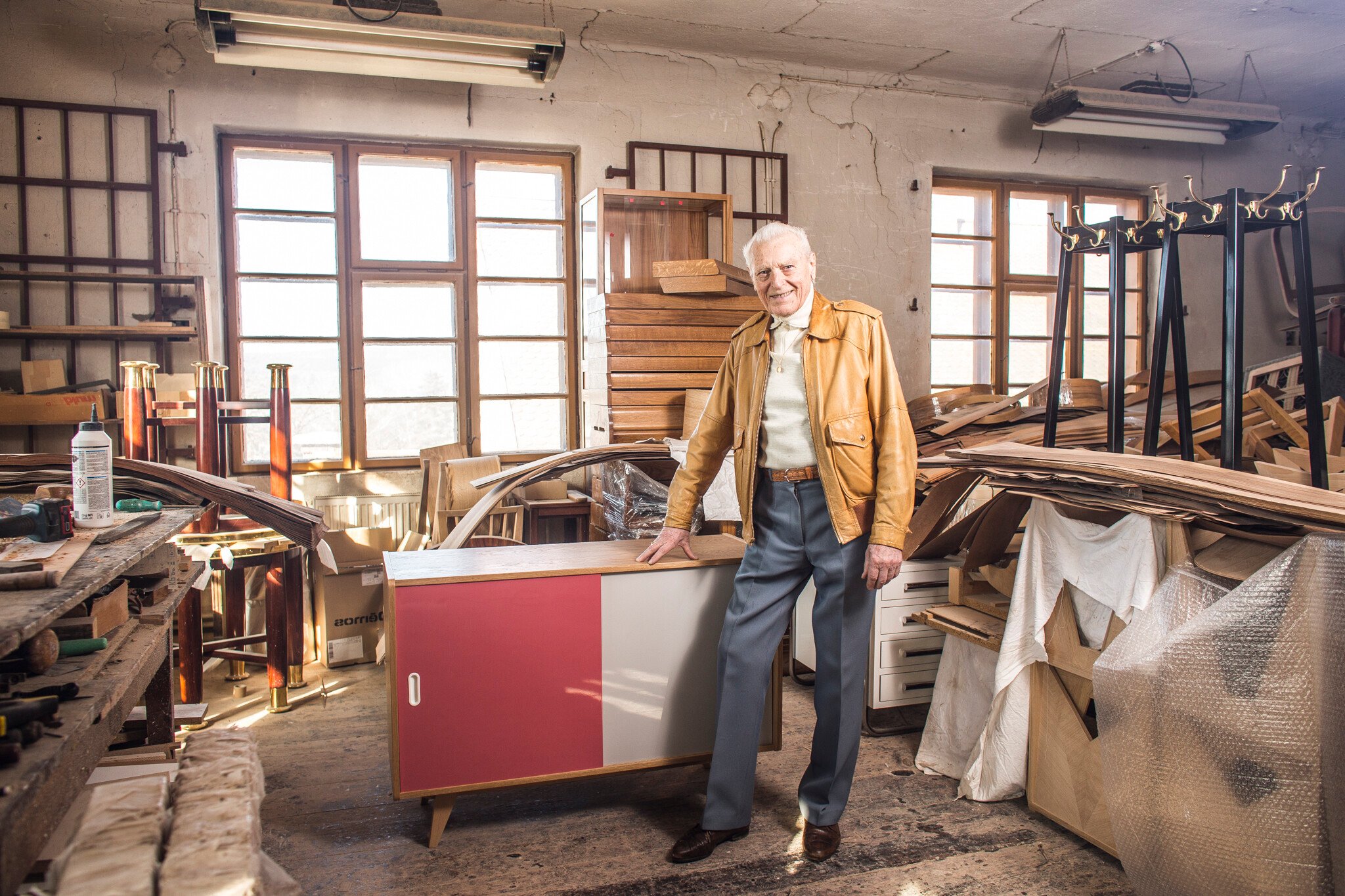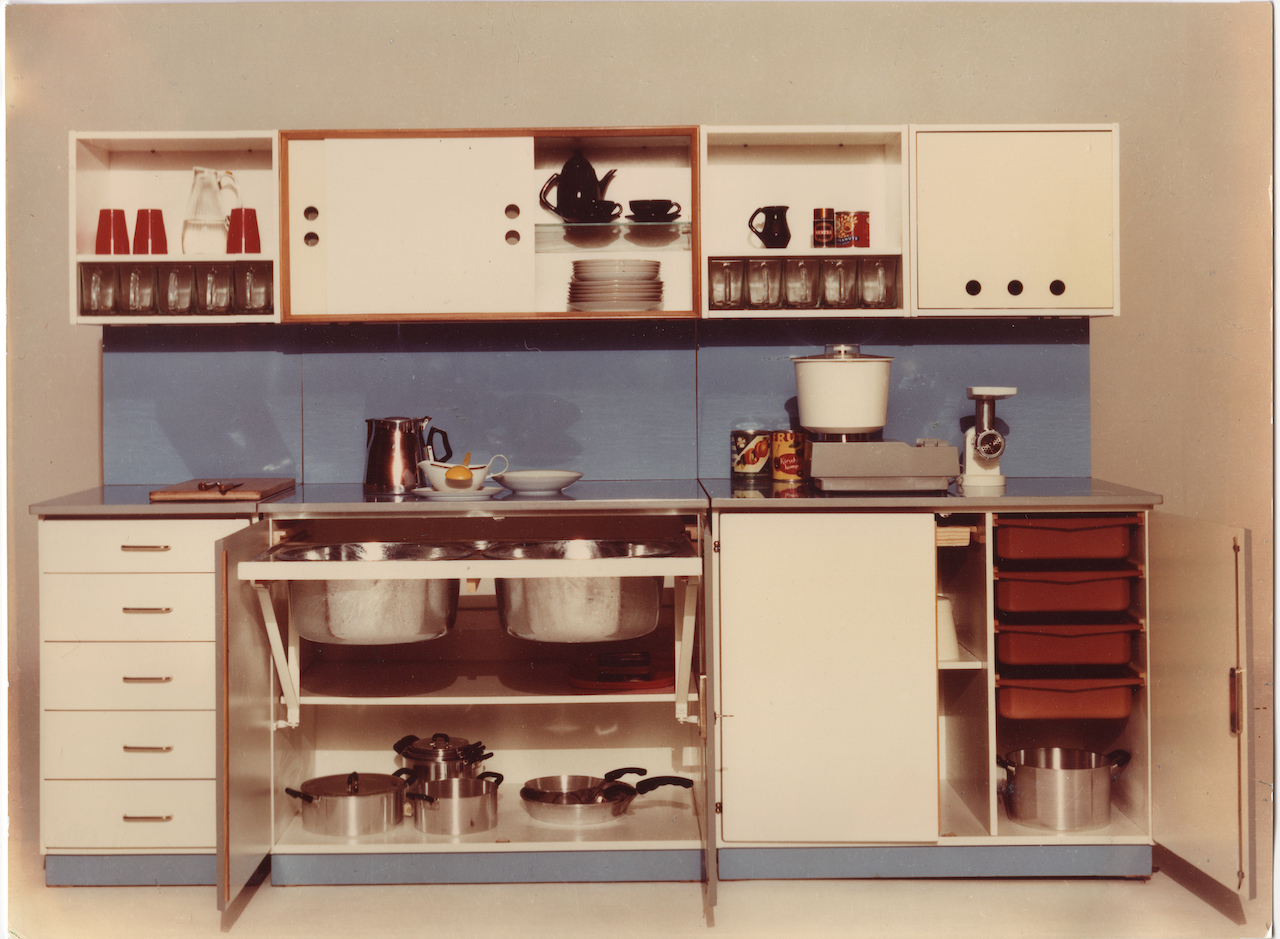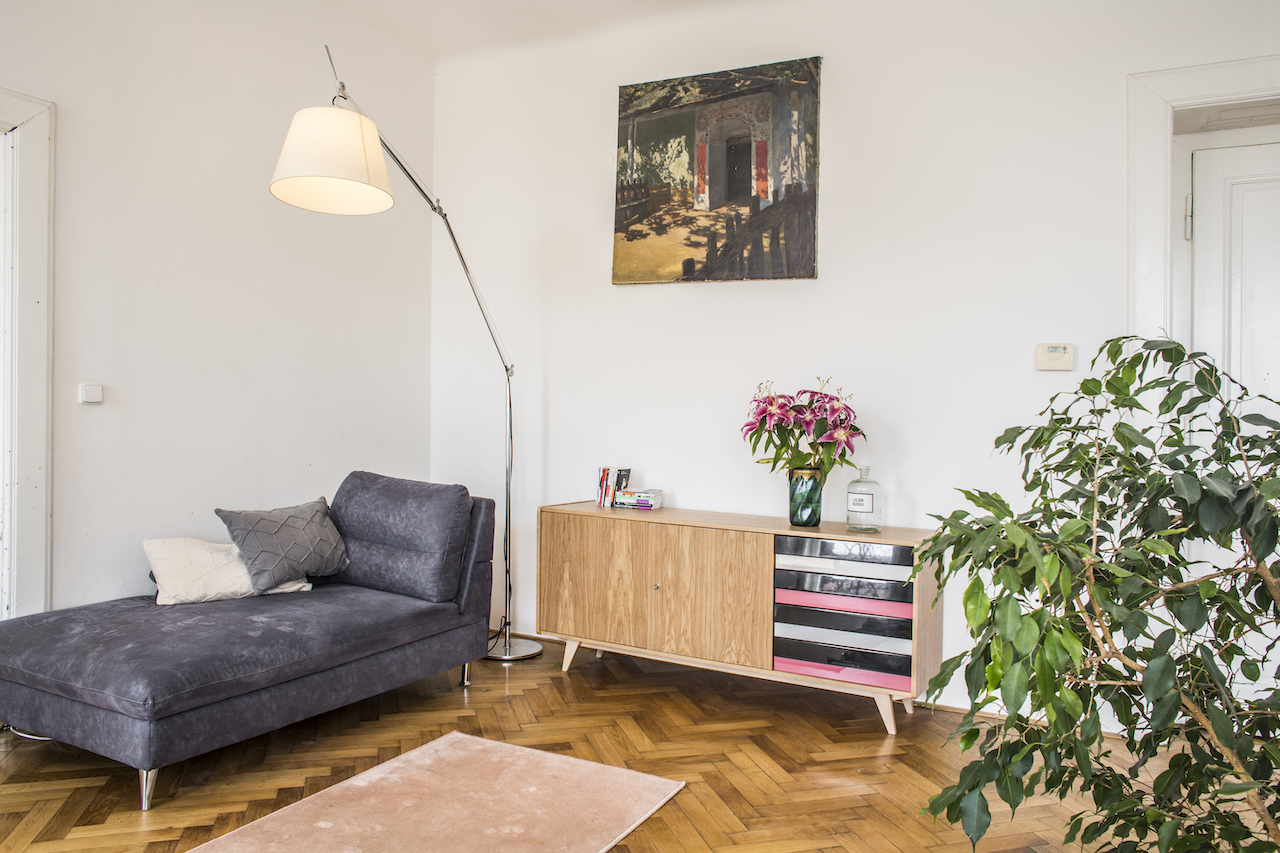Hall of Fame
Jiří Jiroutek





Jiří Jiroutek
(30 January 1928, Pardubice– 24 May 2023, Prague)
Although Jiří Jiroutek has always been a star, his name is not familiar to many people outside of the sphere of design. And that’s a shame, because even during the difficult conditions of the socialist era he was able to transform the design of Czech households for the better. Many contemporary designers can only wish they had such impact.
Always dapper and elegant, Jiří was a worldly traveler who never stooped to “fooling the customer.” He sat down to his drawing board because it gave him joy, and was always ready to design and develop items which were useful and did not include flashy accessories – furniture which was simple to produce, easy to combine, and furthermore beautiful, colorful, and placed on charmingly thin legs. If he had designed a single item in his life, it would have been enough to assure his fame. This item is the wooden U-453 cabinet with black, grey and pink drawers. He developed it in 1958 when he was thirty years old, and it soon became the most popular model from the series of section furniture which the Interier Praha national enterprise produced over the span of two decades.
As a designer, Jiří Jiroutek was always firmly invested in wood. He started learning to work with the material in an industrial carpentry shop owned by his uncle. He continued in his studies in Chrudim at the applied arts school where he started designing and then producing items based on those designs. As he reminisced later, that’s also where he learned that “not everything which looks good on paper can be made in real life.” After finishing high school, he started work as a technical worker in the Michalík firm in Prague which made bespoke solitaire pieces, so-called “art furniture.” Later, the enterprise was nationalized and renamed to Interier Praha. It was also then that he started observing the carpenters working as they cut, planed and glued everything he had designed for them – and he found it very labor-intensive and complex. He started thinking about ways to make their production more effective. And he never looked back.
He started designing furniture as a modular system, in parts which he designed separately and which could be assembled during the last stage of the production process. As early as 1954, he designed a sectioned kitchen with two sinks which became very popular. With furniture sets, he always thought about the arrangement of individual sections. He based his ideas on his knowledge of contemporary urban living and the inhabitants’ needs and created designs whose ingenuity made everyday life easier and were a joy to look at.
In the autumn of 1968, Jiroutek met Ingvar Kamprad, the founder of the Swiss company IKEA, who was visiting Czechoslovakia on a business trip. Kamprad was enthralled by a few of his construction hacks and decided to employ the brilliant furniture designer. For three years, between 1969 and 1972, Jiroutek designed solutions for the assembly of furniture pieces for shipping. At the time, IKEA was already sending out their furniture disassembled in flat packages in order to save on shipping costs and space. The enterprising Czech was at one point responsible for an entire section of furniture, commenting on and approving the design sketches. Thanks to working for IKEA, he was also able to attend conventions in Copenhagen which presented the best design solutions of their time. He thus gained an important perspective which was often lacking with designers working in socialist Czechoslovakia.
However after three years, Jiří Jiroutek was recalled to Interier Praha but, in line with the absurdity of the era, he was not allowed to continue working as a designer. He worked for a while in sales, later transferring to international sales where he organized exhibitions across Europe. In 1992, at the age of 64, he founded his own studio – Ateliér Jiroutek – which specialized in designing bank and insurance house interiors. Even at age 90 he was interested in designing furniture for students and collaborated with the company Nanovo. It was as part of this collaboration that his famous U-453 cabinet was reissued for production in 2018. Even after sixty years, its popularity testifies to the timeless qualities of the original design.
In his U-450 furniture series, Jiří Jiroutek combined the aesthetics of the so-called Brussels style with accessibility for a wide consumer base. In his work he oscillated between the positions of constructor-inventor and an aestheticist with a well-defined artistic sensibility. Thanks to his perfect knowledge of wooden furniture construction, he was able to lower the production costs so that his designs allowed for mass production of items while remaining affordable. But utility was as important to him as aesthetics. His designs show a disciplined, almost aristocratically elegant, beauty which, perhaps paradoxically, became popular with millions of customers from socialist Czechoslovakia. The essence of his, in all matters uncompromisingly honest, approach is visible mostly in the aforementioned cabinets made from light wood and equipped with drawers or sliding doors for saving space; these also provided him with the opportunity to use a tasteful, harmonious but very bold color scheme, and he was one of the first designers in Czechoslovakia to do so. A few million pieces of this iconic series were produced between 1958 and 1978. And the U-453 cabinet with colored drawers to this day attracts both Czech and international collectors and lovers of interior design. That is quite a success for one designer’s life, providing him with a golden ticket into the Hall of Fame.
Michaela Kádnerová